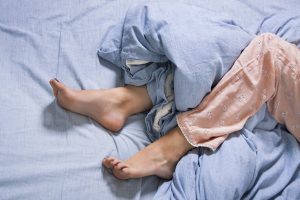Finding Relief for Restless Legs Syndrome
Up to 10% of the U.S. population may experience moderate to severe symptoms of restless legs syndrome (RLS), according to the National Institutes of Health. If you’re among those who experience an urge to move your legs when at rest, partnering with your physician could help relieve your RLS symptoms.
Focusing on preventive care, Doctors of Osteopathic Medicine, or DOs, look beyond your symptoms to consider how environmental and lifestyle factors impact your health. They are trained to listen and partner with you to help you not only get healthy, but stay well.
Symptoms of Restless Legs Syndrome
Restless legs syndrome is a neurologic disorder characterized by an uncomfortable sensation in the legs that is accompanied by the urge to move.
“Symptoms may worsen later in the day, which can impact your ability to get sleep,” Aaron Ellenbogen, DO, an osteopathic neurologist explains. “Some people find they must get up and walk around after going to bed.”
The sleep loss associated with RLS can cause extreme fatigue, anxiety and depression. Long periods of inactivity, such as sitting through a movie or traveling a long distance via car or plane, also can trigger RLS symptoms.
“It’s time to see a doctor if your RLS symptoms are interfering with regular activities or sleep,” says Dr. Ellenbogen.
Getting Relief
Although there isn’t a cure for restless legs syndrome, partnering with a DO can help you develop a treatment plan to alleviate your symptoms.
- The U.S. Food and Drug Administration approved four medications to treat moderate to severe RLS. Discuss with your doctor to learn more.
- Iron supplements have proven helpful for some RLS patients. “Iron serves as a co-factor in the production of dopamine (a chemical that impacts movement). If not enough iron gets into the central nervous system, then there may not be enough dopamine produced, which can lead to RLS symptoms,” Dr. Ellenbogen explains.
- A pilot study published in The Journal of the American Osteopathic Association reported that usage of a foot wrap significantly increased sleep for those with moderate to severe RLS symptoms.

